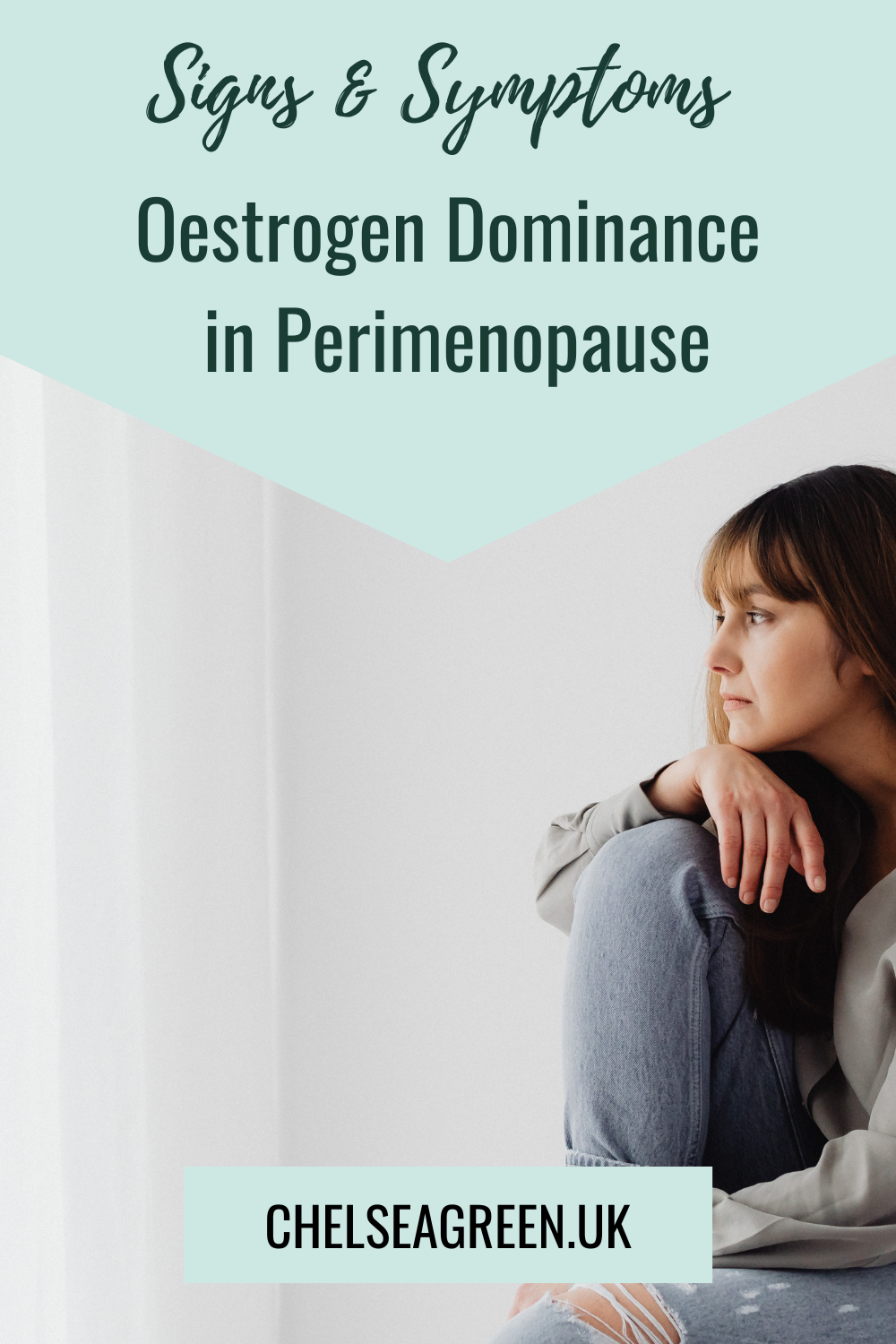Yes, oestrogen is falling in perimenopause, but for most of us at some point, we will struggle with symptoms of oestrogen dominance in perimenopause. In this blog (or video if you prefer) I am sharing the signs and symptoms of oestrogen dominance and how you might assess for an oestrogen-dominant state in perimenopause.
Oestrogen in Perimenopause
As we enter perimenopause, progesterone is the first hormone to fall. And it falls rapidly, leaving us in a state where we have too much oestrogen to progesterone. As we move through perimenopause, oestrogen begins fluctuating from the highest of highs to the lowest of lows and even in those low states, we can have too much oestrogen relative to progesterone.
And this is what I am referring to when I say oestrogen dominance in perimenopause. It is the level of oestrogen relative to progesterone.
Symptoms of Oestrogen Dominance in Perimenopause
Oestrogen is one of our main sex hormones alongside progesterone and it comes in three main forms:
- Estrone (E1) – Is the main oestrogen made post-menopausally
- Estradiol (E2) – The main oestrogen made during reproductive years
- Estriol (E3) – The predominate oestrogen made in pregnancy
However, we make all three of these oestrogens, at all times and in varying amounts.
So how would you know if you were in an oestrogen-dominant state?
Signs and symptoms are a very good place to start, but you can also test and my preferred test is the Dutch hormone panel. This is a test I run with all my clients inside my Haywire Hormone Fix programme, and with the Dutch, I am looking at the individual levels of E1, E2, E3, and their metabolites to see how well oestrogen is being used and cleared. As well as the total level of oestrogen, and that total relative to progesterone.
Oestrogen Dominance Symptoms
Oestrogen dominance symptoms are those of excess:
- Excess PMS with rage and anger and extreme mood swings
- Heavy flooding periods
- Fibroids and cysts
- Painful periods including endometriosis
- Breast tenderness, lumpy or fibrocystic breasts
- Fluid retention and bloating
- Acne
- Weight gain – more around the hips, bottom, thighs, back and breasts
- Histamine intolerance (oestrogen stimulates mast cells to make more histamine and down-regulates the enzyme, DAO, required to clear histamine)
And because oestrogen dominance in perimenopause is a result of low progesterone, you may also see symptoms of low progesterone as well. Symptoms such as:
- Low mood, anxiety
- Irregular cycles
- Spotting between cycles
- Sleep issues
- Headaches and migraines
So if you are thinking this sounds like me, what can I do… I have 3 tips for you…
- Click on my video and subscribe to my YouTube channel this is the first video in a new series I am doing on oestrogen dominance.
- Download my free guide ‘Thriving in Your 40s and Beyond’.
- Focus on optimising your gut, liver and bowel health with pre and probiotic foods, lots of fibrous vegetables, and bitter leafy greens, whilst avoiding refined carbohydrates, tap water and conventionally farmed meat and dairy.
In my next blog/YouTube video I will be taking a deep dive into point number 3 looking at foods to help clear oestrogen and promote better gut, liver and bowel health.


